The Gift of South Dakota
Subscriptions to South Dakota Magazine make great gifts!
Subscribe today — 1 year (6 issues) is just $29!
Eggy Coffee?
Aug 30, 2012
As the big day for the Heirloom Recipes Competition at the South Dakota State Fair draws near, my mind is more and more consumed with thoughts of vintage family recipes. My Aunt Julie recently shared a couple that my great-great grandmother, Alma Johnson, gave her friend Mabel Hovden back in the 1920s. Alma wasn’t known as much of a recipe follower, but it made sense that the surviving instructions were for cakes. After all, afternoon coffee was an important part of a Scandinavian farm family’s day — and you can’t have afternoon coffee without some sort of sweet accompaniment.
I asked my aunt what style of coffee was made back then. They didn’t have plug-in drip machines or fancy French presses, after all. Julie replied, “I'm betting that egg coffee was in the works. That was the kind I remember Grandma Johnson always making. It was best to get there early in the day, though, as her coffee seemed to get stiffer as the day wore on. No wonder Grandpa Johnson would add spoonful after spoonful of sugar. Speaking of coffee, I could use some myself right now!”
Julie introduced me to egg coffee years ago. One Sunday morning as we went to brew the first pot of the day, her coffee carafe broke. I started to panic. “I can’t sit through church uncaffeinated!”
“Don’t worry about it,” my aunt said cheerfully. “We can make egg coffee.”
What? Eggs in coffee? What kind of crazy talk was this? Jules had never been prone to such outbursts of bizarre behavior before, so I tried to suspend my disbelief.
As it turns out, that was a good thing. I did not know then that egg coffee was a cherished Scandinavian-American tradition from the days before automatic coffee makers, a concoction beloved of church basement ladies throughout the Midwest. Mixing coffee grounds with beaten egg is supposed to clarify the brew and make it less bitter. The exact method varies, but one thing remains constant — you'd better have a good dessert to serve with it.
So picture yourself in a Volin, South Dakota farmhouse kitchen in the mid-1920s. Your companions are two aged non-English-speaking ladies, three or four rowdy kids, a sick calf warming up behind the cookstove and a Swedish immigrant housewife with a devilish sense of humor. The egg coffee is extra hearty from hours of simmering on the stove, but the cake is good and the company lively. Enjoy.
Egg Coffee
From Talk About Coffee
1 egg, beaten
1 crushed eggshell
1 cup ground coffee
1/2 cup cold water
8 cups boiling water
In a small bowl, mix the ground coffee with the beaten egg until the grounds are well coated. Stir in the eggshell, then add water. Meanwhile, bring 8 cups of water to boil in a large saucepan. Add egg-coffee mixture to the boiling water and stir for about four minutes, or until the foam subsides. Remove from the heat and cover the pan. Let stand for 7-10 minutes, until the grounds and eggshell have settled to the bottom of the pot. Strain the coffee through a wire or cloth strainer into coffee cups or into a serving carafe. Add sugar and milk to taste if desired.
Orange Cake
From Alma Johnson to Mabel Hovden c. 1925
Julie advises, “There are no hints as to oven temperature or baking time. And in this day and age, I'd add poking holes in the cake with a fork before drizzling the orange/sugar mixture on it so it would run in. Probably another thing that everybody just 'knew.' If Grandma Johnson knew you were coming and she had an orange, you might get treated to this one.”
1 cup sugar
1/2 cup butter or lard
1 cup buttermilk
1 cup raisins
2 cups flour
1 teaspoon soda
1 egg
Glaze: Peeling of one orange grated. Squeeze juice from orange and put in 1/2 cup sugar. Let stand while cake is baking and pour on cake when taken from oven.


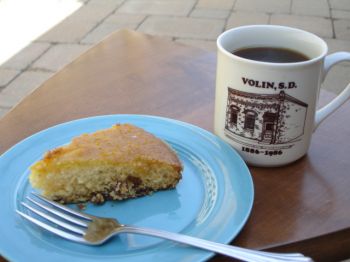
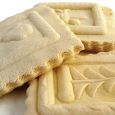
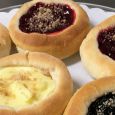
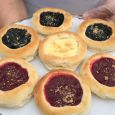

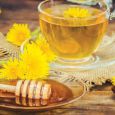



Comments
I'd ask you for the Lake Norden method, but I'm sure it serves at least 40.
My understanding is that much like lutefisk consumption, the practice of making egg coffee is rare or unheard of in Scandinavia now.
I've also read that Norwegians used fish skins or swim bladders for coffee-clarifying purposes before they switched to eggs.
The real clain to fame was held by Laura's Grandma Rachel. Her coffee (made in an enamel pot, of course) was still boiling long after it was poured into your cup! Thank you Laura for a wonderful article. It made me laugh and remember those wonderful days in a much simpler time. I will certainly try the cake and coffee once I find my pot again!
How fun to read all these comments of connection with people over their egg coffee. You know how to spark something good, Laura!
It's true, the comments are great. I love food stories!
Amazing what you find in the Magazine.